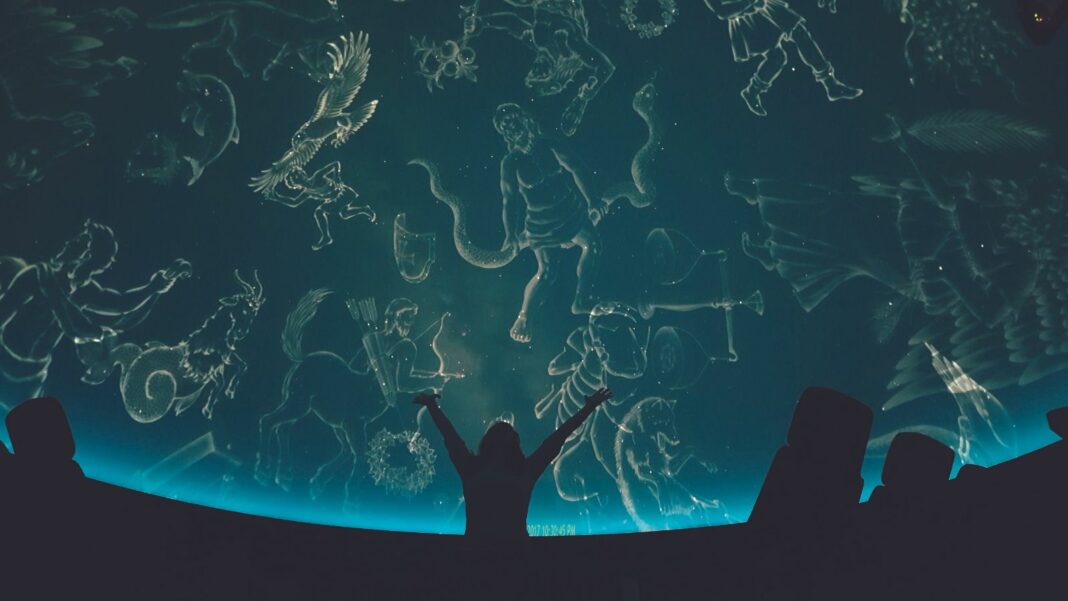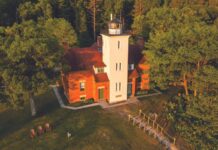By Yvette Pecha
Perhaps you’re craving a dose of culture, but you’re not sure what you’re in the mood for…art? History? Science? If you live in the PIE&G service area, you don’t have to choose—just visit the Besser Museum in Alpena, where all three are preserved, exhibited, and celebrated under one roof.
The museum is a 42,000-square-foot facility containing a collection of more than 47,000 artifacts. It was established in 1966 through a monetary gift from Jesse Besser, who created the Besser Company in Alpena and is famous for inventing the “Besser block,” which revolutionized the concrete block-making industry. Museum Executive Director Christine Witulski said, “Jesse Besser wanted to bring the outside world into Northeast Michigan so that people could have experiences they might not have otherwise.”
One such experience awaits at the state-of-the-art digital planetarium, the only one of its kind within 150 miles. In addition to showing films and various exhibitions, Wiltulski said the planetarium serves as a complement to the four dark sky parks nearby. “We utilize our planetarium to teach people what to look for,” she said. “We help them navigate the night sky, pointing out the astronomical features they’d be able to see and leaving them more familiar with things like constellations and the visible planets when they go into these parks.”
Another popular science exhibit is the two-story Foucault pendulum that consists of a heavy weight on a long wire, the swing of which demonstrates the rotation of the Earth. Science can also be found in the yard of the museum, which houses the Devonian fossil park. Visitors learn about the Devonian Period (which was roughly 400 million years ago) and literally get to unearth cultural gems in the form of fossils from that era that they can then bring home.
If it’s the arts that inspire you, you’ll find paintings and sculptures that cannot be found anywhere else in Northeast Michigan. In addition to world-renowned talents such as Dali, Cezanne, Renoir, Picasso, and Chihuly, the museum features work from local, regional, state, and national artists. Art exhibits are regularly rotated so visitors always have something new to see.
History buffs who visit will feel like they’ve been transported back in time. A popular feature is a recreated 1890s “Avenue of Shops,” where people get the opportunity to walk through “old Alpena.” There’s also the Historic Village, which contains five original structures that are over 100 years old. Many other exhibits explore the state’s rich history, from lumbering to farming to Native American history, geology, and industry. The Natural Wildlife Gallery features native and non-native Michigan Great Lakes fish, a variety of flora and fauna, and a great number of mounted animals. Also on display is the last remaining Alpena Flyer in the world. (Yes, the Alpena Motor Car Company was a thing that existed, albeit not for long.)
Naturally, there’s a maritime history aspect to the museum—you’ll find both the Katherine V and the Chinook on view. The research vessel Chinook, originally built for the Michigan Department of Conservation and then transferred to the Alpena Fisheries Research Station, was donated to the museum in 2016. The Katherine V is a 1928 wooden commercial fishing vessel believed to be the last large intact wooden fishing tug that sailed Lake Huron. “These boats really tell the stories of the Great Lakes fisheries heritage,” Christine said. The boats are open for tours during Besser’s Fall Harvest Fest and Log Cabin Day (this year’s Log Cabin Day is June 24 and would be an excellent time to visit the museum).
With the diversity of offerings at Besser, Witulski, who has been with the museum for 13 years and served as executive director since 2012, says it can be challenging to decide what’s worthy of display. “It’s such a big institution,” she said. “We want to make sure everything reflects the creativity, community support, and preservation of the legacy of this area that’s made us what we are.” Their discernment pays off—“People come in and are surprised, saying, ‘Wow, I had no idea there was a museum of this quality in rural Northeast Michigan,’” she said. The evident delight of visitors is Witulski’s favorite part of the job. “It’s just great to have the opportunity to create really unique experiences for visitors of all ages,” she said.
Current renovations
In the future, there will be even more to enjoy at Besser. Witulski said the museum is in the midst of a $1.5 million project that will transform 3,000 square feet of exhibit space into an immersive experience incorporating 21st-century design and technology. It will further reflect upon the area’s history, representing 11 different timelines. The upgrade is expected to be completed in December 2024.
Donations are welcome!
As a 501 (c)(3) nonprofit, Besser does not get continual local, state, or federal funding. It relies on entry fees, fundraising, grants, and donations. You can donate by becoming a member—there are various levels of membership, and all of them come with free annual admission to the museum. Go to www.bessermuseum.org/membership for more details or to find out how to make a donation.
Volunteers are needed, too
The museum sees about 20,000 people come through a year, and about 2,000 of them are students on field trips. With just seven employees, additional help is greatly appreciated. Volunteers can give as little or as much time as they choose. Visit www.bessermuseum.org/volunteers for more information.






